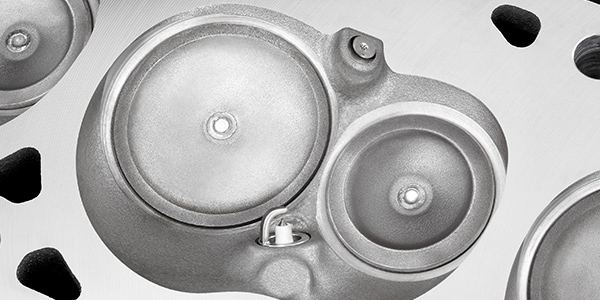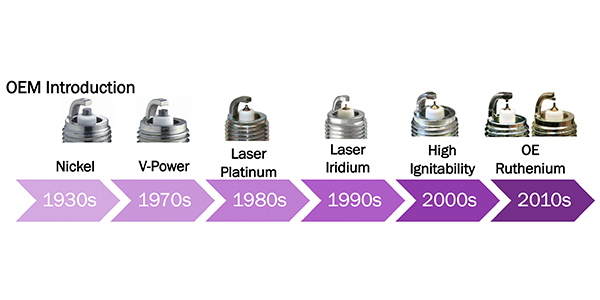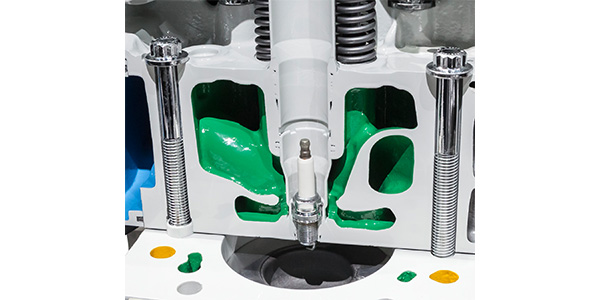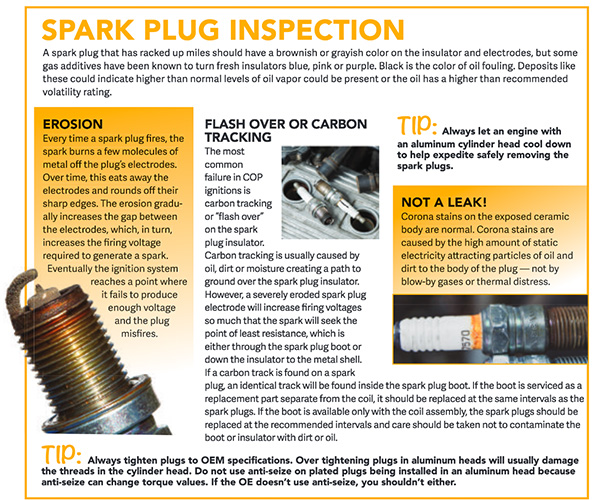
Without the spark plug, there would be no internal combustion engine. The exact date of birth and father of the first real spark plug isn’t known for sure – some credit Edmond Berger with the invention as far back as 1839 but it was unpatented and definitely not designed for a car engine.
Jean Joseph Etienne Lenoir is credited with developing the first commercially successful internal combustion engine in 1858 and held the U.S. Patent for the spark ignition system.
Other spark intrigue and corporate drama involving such names as Bosch, Tesla, Champion and Lodge occurred during the automotive industry’s earliest days and led to rapid advancement in the spark ignition business – but for the most part today’s spark plugs look pretty similar to the originals.
Those heady early days led many people to assume that development effectively ended when the first nickel electrode plug hit the street – nothing could be further from the truth. Over the decades, ceramic improvements, electrode design, tip construction and advancements in metallurgy have dramatically improved the life and performance of these relatively low-priced engine components.

Those original plugs – designed for low speed and low compression engines – had a life expectancy of far less than 1,000 miles, compared to today’s premium plugs made with high-quality precious metals such as platinum, iridium or ruthenium that are routinely expected to last for 100,000 miles or more.
But what do those life cycles really mean to the consumer, the shop and the engine? The extended life of premium plugs doesn’t always ring true in real-life driving, where conditions may not be optimal for achieving the promised results – experts say much of the problem stems from the continued refusal by many consumers to understand the importance of routine maintenance.

With today’s high compression engines regularly operating at over 1,000 degrees F even street cars subject their engine components to incredible stress. The old process of “reading” a spark plug is for the most part a lost art. Thanks to today’s engine computers, engines are monitored constantly, with fine adjustments being made to spark rate and fuel flow. Today’s version of reading a spark plug can actually give you an indication of how other components are functioning within the engine.
Long-life spark plugs, such as those made from platinum and iridium, perform at a lower heat range than copper spark plugs. Standard copper plugs are less conductive and tend to overheat in the high-temperature combustion chambers in today’s direct-injection engines. Iridium’s melting point is approximately 2,450 F (some claims are as high as 4,000 F), which is more than platinum. However, the overall longevity of these metals is far better than copper plugs.
Spark plug problems may be due to a variety of reasons. Since spark plugs are continually firing as the engine is running, they eventually wear out. But certain conditions can cause plugs to wear out faster than usual.
Some signs that spark plugs or ignition wires should be serviced or replaced are if the engine idles rough or is hard to start, misfires, surges or hesitates, has poor fuel consumption or lacks acceleration. If your customer complains about some of these conditions, it might be time for a new set of plugs. Many people don’t realize that a simple set of new plugs also can make a noticeable difference in performance and fuel economy. But there also could be other underlying causes of premature spark plug wear.
Carbon buildup can be another cause for a plug to go bad, as can a cracked distributor case or coil. Other symptoms that can lead to early failure include a dirty fuel injector, a too lean or too rich fuel mixture or a clogged air-filter element, just to name a few. These conditions can allow carbon to build up on spark plugs and quickly cause them to foul or lose spark intensity.
As the electrodes wear, the voltage needed to fire the plugs continues to increase and eventually will lead to a misfire and a “Check Engine” light illuminated on the dash. Plug life can be shortened by regularly driving on short trips and idling for long periods of time. Worn valve guides or piston rings can lead to fouling problems, requiring more frequent spark plug changes.
It’s important to understand what the end of a plug’s life cycle truly means to the rest of the system, experts say. Basically, if you’re putting a spark plug into a stress range, you’re really only stressing the rest of the system including the ignition coil and PCM.
Spark plug manufacturers take their aftermarket cues from the vehicle OEMs, who dictate plug design parameters. There has been incredible change over the past five years. From 2013 to 2018, 88% of vehicles that rolled off the OE assembly lines came with an iridium spark plug. Prior to that, for the previous 30-40 years, it was the complete opposite, with most cars coming with nickel plugs.

Designs were adapted for both durability (metal type) and performance (tip design). Advancements in metal type allows manufacturers to develop tip designs they couldn’t easily do before. Nickel plugs couldn’t use a fine wire because it would wear out in as little as 5,000 miles.
With a stronger metal like platinum, iridium and ruthenium, fine wire designs allowed for a much better performing plug, giving more complete burn of the fuel in the engine. It’s a partnership within the spark plug itself.
Today’s newer spark plug technology is typically an upgrade to old spark plug technology either in durability or performance and a legitimate replacement sales opportunity. In many cases customers will notice immediate improvements in engine idle, stronger acceleration or reduced exhaust fumes.
Indexing spark plugs – the process of carefully positioning the plug electrode in the cylinder head before tightening it in order place the spark as close as possible to the fuel source – is not a new concept. Racers and performance enthusiasts have been employing the practice for years in hopes of picking up 1-2% better power.
Some higher end vehicles have been coming from the factory with indexed plugs for more than a decade. Industry experts say even some of the more mundane domestic vehicles are seeing indexed plugs as well, so carefully check the specifications of the vehicle you are servicing.
Only change plugs when the engine is cold or slightly warm to the touch, to avoid damaging the threads in the spark plug holes.
Spark plugs don’t have to have the same electrode configuration as the original plugs. However, replacement plugs should have the same thread diameter, pitch and length, same type of seat and same reach into the combustion chamber. Always follow the application listings to make sure your customers get the correct replacement plugs.














